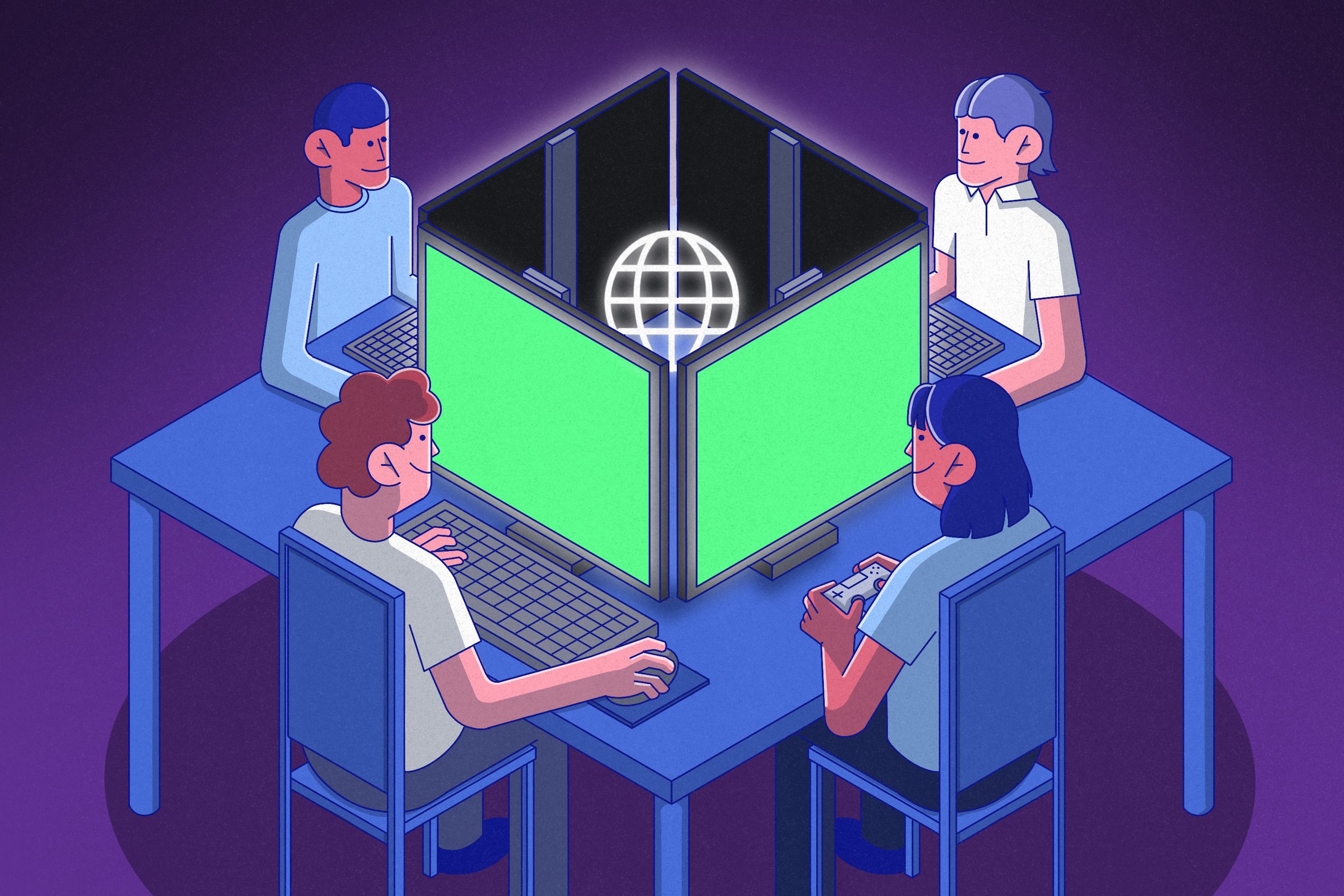It’s time to talk about my good buddy RJ. RJ45, that is. Well, technically, we’re going to talk about how ethernet cables, which tend to use an RJ45 connector, are glue that once bound so many of us together in multiplayer gaming bliss (before then, too, but my part of this story began at the turn of the century). It was a joyous copper pipeline for so many who might have looked askance at the four-player couch multiplayer that was the only context in which most ordinary people could relate to gaming with friends. That’s right; we’re talking LAN parties.
You know the ones. You heft, in multiple trips, your whole gaming rig — a beefy CRT monitor, honkin’ water-cooled desktop machine, keyboard, headphones (or outboard speakers if you’re brandishing), and all the requisite cables into the extended cab of your dinky Nissan pickup truck. Then load up on soda and haul ass to your friend’s mom’s house to take it all, in multiple trips, up to their tiny, poorly ventilated room for a good time, all thanks to a few ethernet cables and a network switch — no internet required.
In the mid-to-late ’90s, LAN parties grew beyond the confines of basements and bedrooms everywhere, exploding into the biggest esports and gaming conventions we have today. For example, the first QuakeCon took place in Dallas in 1996, and in the years that followed, hundreds — and, eventually, thousands — of people lugged their PCs to the yearly event in North Texas (in fact, the first in-person QuakeCon since the beginning of the pandemic is happening this August), and esports tournaments like Repeat.gg are so popular that big companies like Sony invest heavily in them.
The traditional LAN party, though, wasn’t really my thing. Sure, I participated in them, sitting in a hot room with other nerds, but my favorite peer-to-peer all-nighters took place in a 700-square-foot apartment in the suburbs with game consoles and hulking standard-definition tube TVs.
For a brief and glorious few months in my 20s, about every Friday night, we convened in my apartment, with TVs and Xboxes strewn all over, to stuff rockets in each other’s faces in Halo.
The setup was chaotic but simpler than a gathering of PCs: each console was paired with a beefy tube TV (which I made those poor suckers carry upstairs to my second-floor domicile), then connected to each other using ethernet cables snaking to a simple network switch. Grab your controllers and go. PC LAN parties were principally the same — they just needed more. More setup, more equipment, more time, more furniture, and more space. A 16-player Team Fortress Classic match takes 16 computers. At my apartment, even just two consoles was a great night.
For the most part, at these console-only parties, we played split screen, though the number of players and systems varied, and there was one guy who always insisted on playing alone on his comparatively massive 27-inch TV (he carried that thing up the stairs, so he earned it). But I liked split-screen play. It meant my teammates were right next to me, and we could coordinate movement with nudges and sly gestures or gleefully shake each other in moments of great victory.
The final moments of a game might go like this: from high in the walls of Blood Gulch, I train my sniper rifle on someone who’s running a flag through the bunny hills between the bunkers, hoping to pick them off. I’m a terrible sniper, so I usually just miss a few times before being gutted from behind by my own girlfriend with an energy sword. Or maybe a grenade, perfectly placed, blows me off my perch and into the valley below. But dead is dead, right?
Once, we managed to get an eight-player Mario Kart: Double Dash!! game going, and friends, that night, we were on top of the world. Halo was great, but it didn’t the frenetic joy of sweeping around the two hairpin turns of the oval-shaped Baby Park track with seven friends, constantly threatened by ricocheting turtle anatomy, exploding bob-bombs, and the ever-catastrophic banana peel lying in wait to wreck you in the waning seconds of your final lap. Ha ha, you were in first place, now you’re extremely not, and everyone is laughing at you (including you).
It was a hell of a night, and I’ve been chasing that dragon ever since.
Don’t get me wrong, online gaming has its perks, especially now. You get a massive, colorful, high-resolution display all to your lonesome. It also opens the door to bolstering distant friendships that, in days past, might have quietly sublimated away, drifting into the eternal. These days, even Nintendo has figured out how to (mostly) make it easy to hop onto Wi-Fi and spin up a game. You don’t even have to leave your house! Sure, playing online means weathering some anonymous butthead’s insults from time to time, but it’s mostly worth it because it’s easy.
Yet for all its worth, online gaming can leave you feeling… disconnected. The triumph of LAN parties came not from expansive screens and immersive audio but from being there. Win or lose, you could see your friends’ elation when their blue shell connected or their feigned misery when their Warthog was blown sky high, and you could share in those feelings, and they could see it on you, too. Did it suck to pull together all the pieces of a LAN party? Yeah, kinda. Would I do it again? In a heartbeat, yes.








